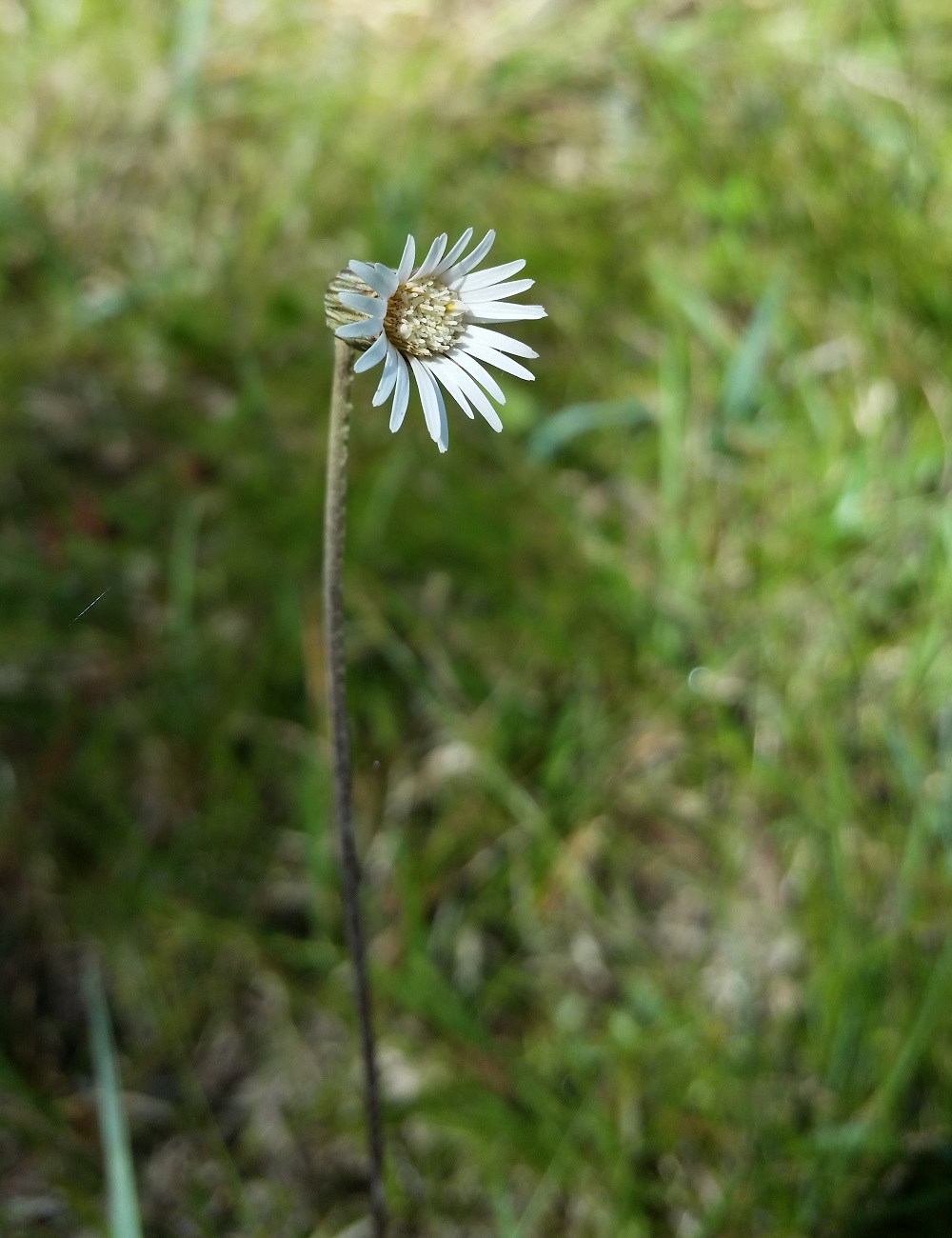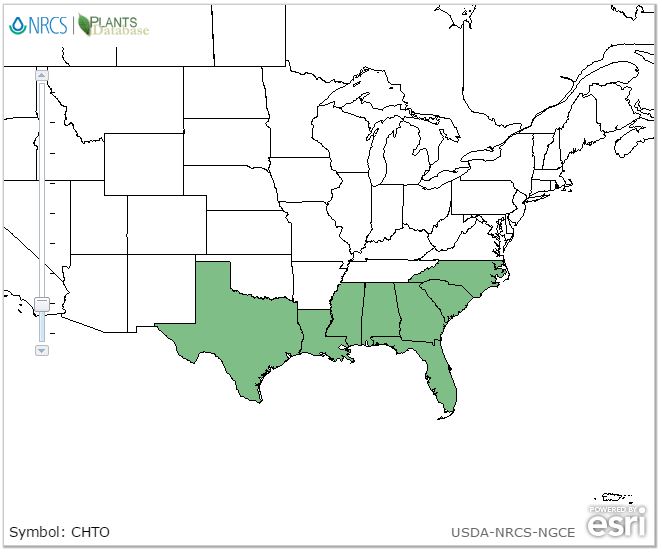Difference between revisions of "Chaptalia tomentosa"
| Line 32: | Line 32: | ||
==Ecology== | ==Ecology== | ||
===Habitat=== <!--Natural communities, human disturbed habitats, topography, hydrology, soils, light, fire regime requirements for removal of competition, etc.--> | ===Habitat=== <!--Natural communities, human disturbed habitats, topography, hydrology, soils, light, fire regime requirements for removal of competition, etc.--> | ||
| − | It can be found in sandhill seeps, savannas, and pine flatwoods.<ref name= "Weakley">Weakley, A. S. (2015). Flora of the Southern and Mid-Atlantic States. Chapel Hill, NC, University of North Carolina Herbarium.</ref> It is a facultative wetland species that commonly occurs in wetlands, but it can also occur in non-wetlands.<ref name= "USDA"/> | + | It can be found in sandhill seeps, savannas, and pine flatwoods.<ref name= "Weakley">Weakley, A. S. (2015). Flora of the Southern and Mid-Atlantic States. Chapel Hill, NC, University of North Carolina Herbarium.</ref> It is a facultative wetland species that commonly occurs in wetlands, but it can also occur in non-wetlands.<ref name= "USDA"/> ''C. tomentosa'' has also been observed in a disturbed seepage, edges of ditches, along a stream, a low meadow, roadside wetlands, an open boggy area, swampy woodlands, and soils ranging from sandy peat to moist to wet loamy sand.<ref name= "herbarium">Florida State University Robert K. Godfrey Herbarium database. URL: http://herbarium.bio.fsu.edu. Last accessed: March 2019. Collectors: William P. Adams, Luis Almodovar, Loran C. Anderson, K. Craddock Burks, George R. Cooley, R.K. Godfrey, C. Jackson, Percy Jones, Lisa Keppner, M. Knott, R. Komarek, R. Kral, John M. Kunzer, R. L. Lazor, Joseph Monachino, T. Myint, R. A. Norris, Elmer C. Prichard, Cecil R Slaughter, R. R. Smith, L. B. Trott, and Rodie White. States and Counties: Florida: Baker, Bay, Calhoun, Charlotte, Clay, Collier, Flagler, Franklin, Gulf, Jackson, Jefferson, Lee, Leon, Liberty, Martin, Okaloosa, Pasco, Santa Rosa, Volusia, Wakulla, Walton, and Washington. Georgia: Thomas.</ref> |
| + | |||
| + | Associated species: ''Pinus elliottii'', ''Pinus palustris'', ''Aristida'' sp., ''Serenoa repens'', ''Hypericum fasciculatum'', ''Sarracenia'' sp., ''Helenium vernale'', ''Andropogon'' sp., ''Ascyrum tetrapetalum'', ''Drosera brevifolia'', ''Xyris'' sp., ''Taxodium'' sp., ''Sisyrinchium'' sp., ''Calopogon'' sp., ''Viola lanceolate'', and ''Pinguicula'' sp.<ref name= "herbarium"/> | ||
===Phenology=== <!--Timing off flowering, fruiting, seed dispersal, and environmental triggers. Cite PanFlora website if appropriate: --> | ===Phenology=== <!--Timing off flowering, fruiting, seed dispersal, and environmental triggers. Cite PanFlora website if appropriate: --> | ||
Revision as of 16:43, 5 April 2019
| Chaptalia tomentosa | |
|---|---|

| |
| Photo by Katelin Pearson | |
| Scientific classification | |
| Kingdom: | Plantae |
| Division: | Magnoliophyta - Flowering plants |
| Class: | Magnoliopsida - Dicotyledons |
| Order: | Asterales |
| Family: | Asteraceae |
| Genus: | Chaptalia |
| Species: | C. tomentosa |
| Binomial name | |
| Chaptalia tomentosa Vent. | |

| |
| Natural range of Chaptalia tomentosa from USDA NRCS [1]. | |
Common names: Woolly Sunbonnets; Pineland Daisy; Night-nodding Bog-dandelion; Sunbonnets
Contents
[hide]Taxonomic notes
Synonyms: none
Varieties: none
Description
C. tomentosa ia a perennial forb/herb that is a member of the Asteraceae family.[1] Leaf shape varies from elliptic to obovate, and leaf margins denticulate. Fruit type produced is an achene. Flower is white with back petals pinkish.[2]
Distribution
It is an endemic species of the Southeastern Coastal Plain, from east North Carolina to south Florida and west to east Texas.[3]
Ecology
Habitat
It can be found in sandhill seeps, savannas, and pine flatwoods.[3] It is a facultative wetland species that commonly occurs in wetlands, but it can also occur in non-wetlands.[1] C. tomentosa has also been observed in a disturbed seepage, edges of ditches, along a stream, a low meadow, roadside wetlands, an open boggy area, swampy woodlands, and soils ranging from sandy peat to moist to wet loamy sand.[4]
Associated species: Pinus elliottii, Pinus palustris, Aristida sp., Serenoa repens, Hypericum fasciculatum, Sarracenia sp., Helenium vernale, Andropogon sp., Ascyrum tetrapetalum, Drosera brevifolia, Xyris sp., Taxodium sp., Sisyrinchium sp., Calopogon sp., Viola lanceolate, and Pinguicula sp.[4]
Phenology
C. tomentosa has been observed flowering from January to June with peak inflorescence in March.[5]
Conservation and management
Global status rank: G5 secure [6].
Cultivation and restoration
Photo Gallery
References and notes
- ↑ Jump up to: 1.0 1.1 USDA, NRCS. (2016). The PLANTS Database (http://plants.usda.gov, 5 April 2019). National Plant Data Team, Greensboro, NC 27401-4901 USA.
- Jump up ↑ [[2]] Lady Bird Johnson Wildflower Center. Accessed: April 5, 2019
- ↑ Jump up to: 3.0 3.1 Weakley, A. S. (2015). Flora of the Southern and Mid-Atlantic States. Chapel Hill, NC, University of North Carolina Herbarium.
- ↑ Jump up to: 4.0 4.1 Florida State University Robert K. Godfrey Herbarium database. URL: http://herbarium.bio.fsu.edu. Last accessed: March 2019. Collectors: William P. Adams, Luis Almodovar, Loran C. Anderson, K. Craddock Burks, George R. Cooley, R.K. Godfrey, C. Jackson, Percy Jones, Lisa Keppner, M. Knott, R. Komarek, R. Kral, John M. Kunzer, R. L. Lazor, Joseph Monachino, T. Myint, R. A. Norris, Elmer C. Prichard, Cecil R Slaughter, R. R. Smith, L. B. Trott, and Rodie White. States and Counties: Florida: Baker, Bay, Calhoun, Charlotte, Clay, Collier, Flagler, Franklin, Gulf, Jackson, Jefferson, Lee, Leon, Liberty, Martin, Okaloosa, Pasco, Santa Rosa, Volusia, Wakulla, Walton, and Washington. Georgia: Thomas.
- Jump up ↑ Nelson, G. PanFlora: Plant data for the eastern United States with emphasis on the Southeastern Coastal Plains, Florida, and the Florida Panhandle. www.gilnelson.com/PanFlora/ Accessed: 7 DEC 2016
- Jump up ↑ [Encyclopedia of Life] Accessed 5 June 2016